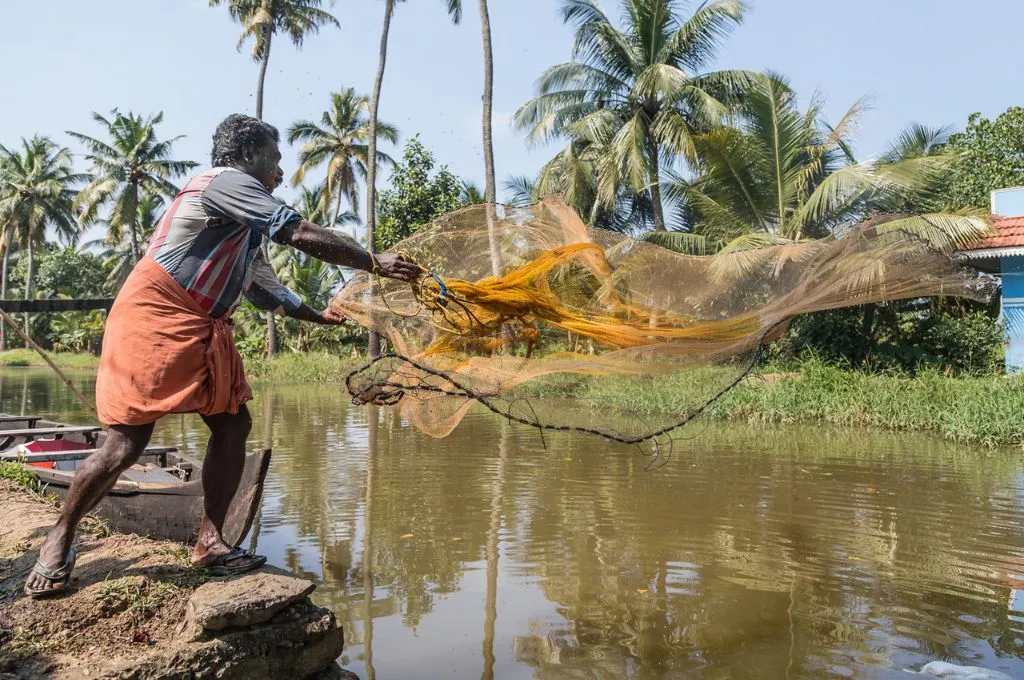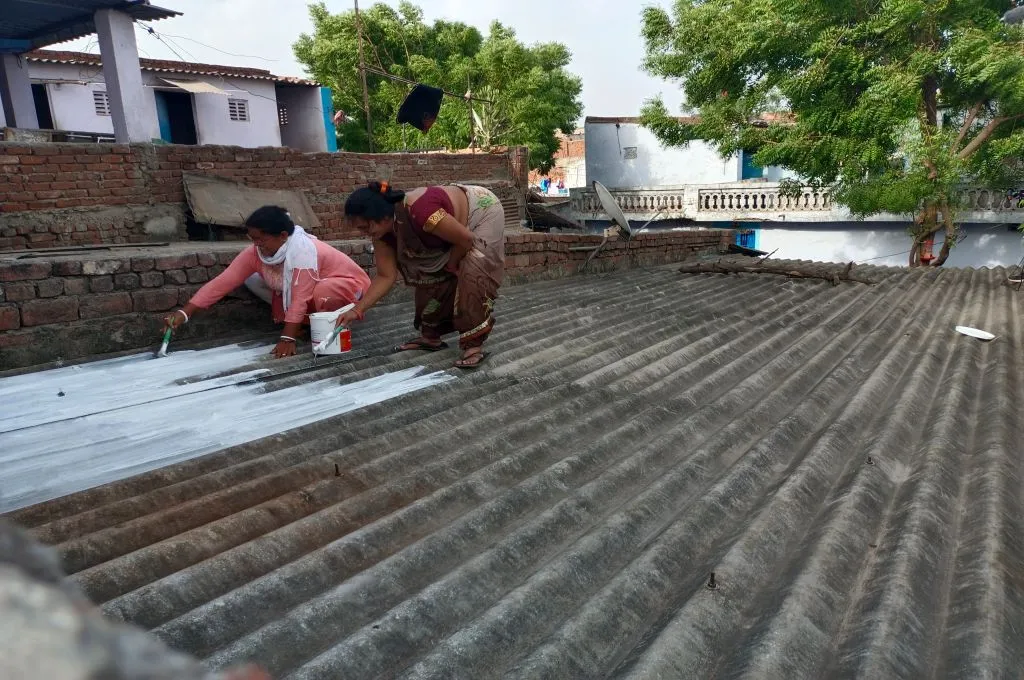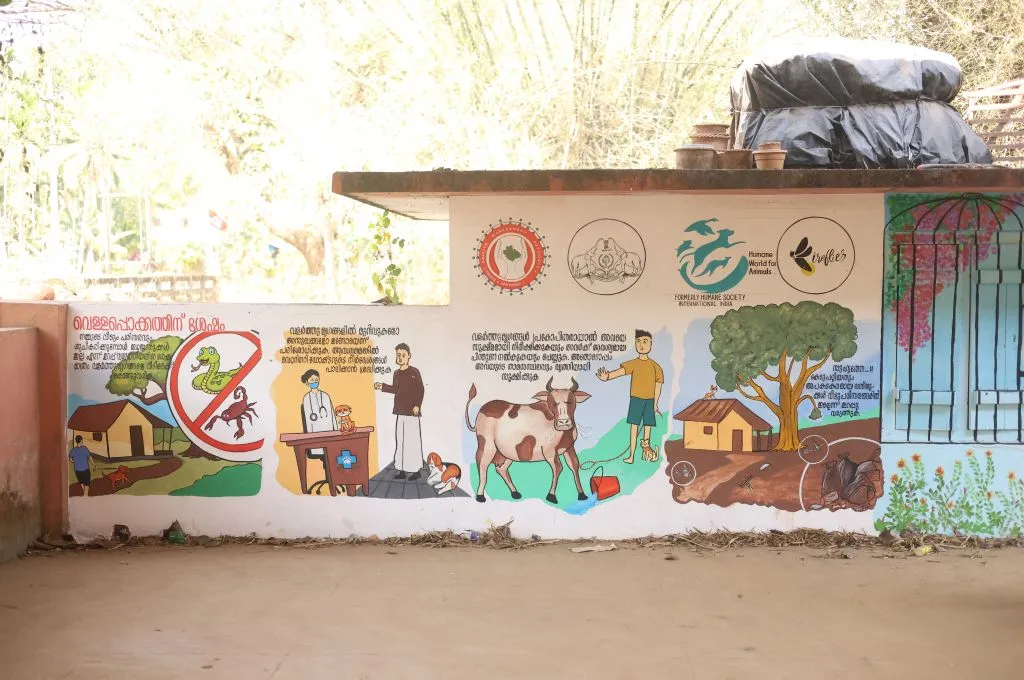It’s 3 am on a weekday in March, and the churmuri bhattis (puffed rice ovens) of Kolikere, in North Karnataka, are just cranking up. Men troop into dimly lit workshops to begin the first task of the day: boil the paddy. They light the furnace to bring the large barrels of water to a boil, and heat and smoke soon fill the room. Despite the early hours, the men are sweating. Once boiled, the paddy is roasted, cooled, dried, husked, salted, and sand roasted. By 1 pm, their work is done—the puffed rice is sacked and loaded into pick-up trucks.
The manufacturing cycle, which lasts 10 hours, requires workers to manage hand-operated machines in stifling rooms, where temperatures rise to more than 45°C, humidity ranges between 30 and 60 percent, and air quality levels reach ‘unhealthy’ limits (35µg/m3 and above). The workers can do little about the heat, save shed their shirts and keep a gamchha (thin, coarse cotton towel) on hand to wipe their damp faces and stinging eyes.
Heat and the informal sector
Heat is an occupational hazard for a large segment of the informal sector, affecting both those who work indoors (blacksmiths, food processors) as well as outdoors (farmers, construction workers). A report by the World Bank estimates that up to 75 percent of India’s workforce depends on heat-exposed labour, which contributes to approximately 50 percent of the GDP.

Low-income communities have a high exposure to heat stress as it is, because of the density of their built environments, the heat-trapping design and material of their homes and workshops, the nature of their work, lack of effective cooling solutions, and poor access to affordable adaptation mechanisms. As temperatures rise—2023 was the hottest year on record—these factors heighten heat stress and can lead to a decline in household income through a series of direct and indirect consequences.
SELCO initiated a study in the summer of 2023 to examine the effects of heat on productivity and income of small-scale entrepreneurs and to investigate the disproportionate impact it had on women workers. We sought to quantify these impacts and document human stories of cause, effect, and adaptation to heat. We surveyed low-income communities engaged in food production or processing, food service, metalworking and crafts, and animal husbandry across North Karnataka, coastal Odisha, Madhya Pradesh, Jharkhand, and urban Gujarat. Some of the sites were not just prone to high heat and humidity but also to natural disasters like cyclones, which helped us understand how communities were building resilience to multiple stressors.
Here are some of our findings from the study.
1. Shifts in time and place of work
Discomfort and fatigue from heat can result in productivity decline as workers slow down, take longer to complete a task, and take more frequent breaks. Nagabushan, a mobility-challenged person who runs a Xerox and stationery shop in Davanagere, Karnataka, was forced to shut his shop on summer afternoons, losing 1.5 to 2 hours of work a day. In the animal husbandry sector, entrepreneurs reported that more animals were falling ill and dying per cycle of rearing, and the quality and quantity of eggs and milk they produced had fallen.
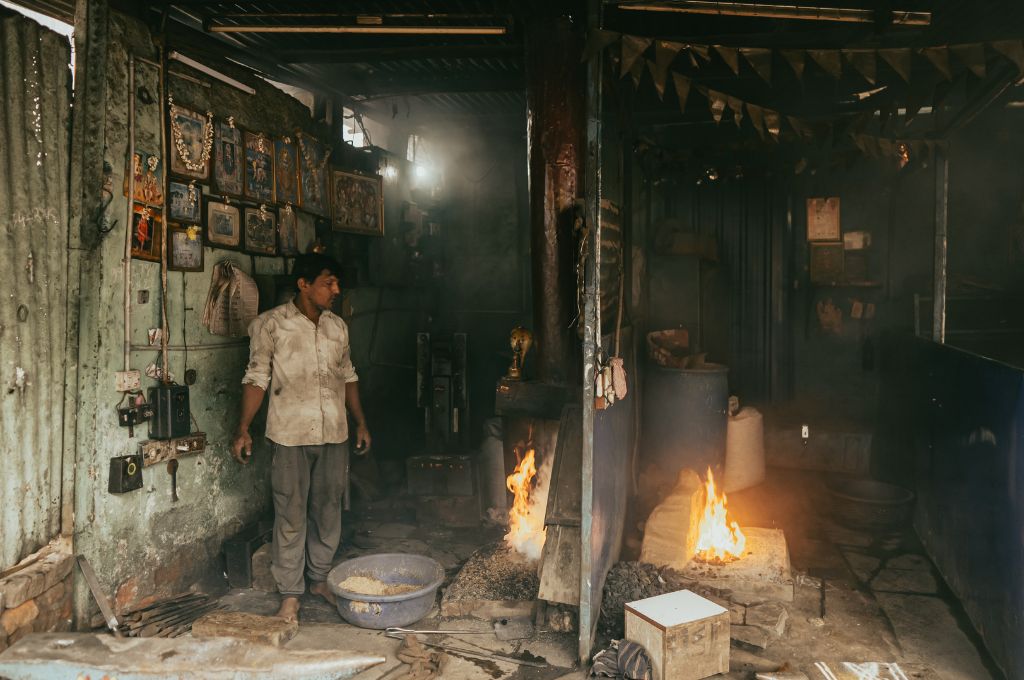
Like the puffed rice producers of Kolikere, we found that other occupational groups such as the blacksmiths of Kolar, Karnataka, and the Dhokra (a type of metal craft) artisans of Mayurbhanj, Odisha, had also started to shift their hours of work—beginning before dawn, breaking off at midday, and wrapping up by 11 am or noon, before peak heat. Absenteeism was calculated by the number of days lost per month, which amounted to approximately two days of productive work.
The heat also drove workers indoors. But even though they escaped the direct glare of the sun, they still had to contend with indoor heat. For the Dhokra craftspeople, the impact of indoor heat wasn’t only physiological, but also material. They reported a lower output of produced goods because the wax required to cast their moulds couldn’t hold up to the heat and would lose form quicker than before.

2. Downskilling, early retirement, and reduced income
Reduced work expectancy due to heat may be the biggest challenge that low-income communities engaged in informal work face in the coming years. In the formal workforce, working till the age of 65–70 years is the norm. However, during our study, we observed that the health implications caused by prolonged exposure to heat—chronic fatigue, cardiovascular and musculoskeletal issues—had either forced people to stop working after the age of 40–45 or driven them to less laborious tasks within their trade. Workers in their prime now found themselves prematurely past it.
Unable to work heavy machinery, lift heavy tools, or stir large vats of food, they were assuming lighter tasks. Food manufacturers were taking up food packaging; seasoned blacksmiths were carving wooden handles for tools or polishing them instead of chiselling or forging the metal itself. As a result of this downskilling, they were earning lower wages in trades that are already marked by stagnant incomes.
Additionally, entrepreneurs such as blacksmiths and food processors who would have once done the heavy lifting themselves were now forced to hire younger hands, causing their out-of-pocket expenses to increase. If earlier their profit was INR 15,000 a month, now they were paying INR 5,000 to an apprentice, even though the produced output remained the same.
The reduced income also prevented people from seeking medical treatment for the symptoms of heat stress. We found men turning to drink to distract themselves from health problems, and liquor consumption was reportedly on the rise in some of the communities we spoke to because it was a cheaper palliative.
3. More burdens for women at work
Both men and women were affected by heat stress, but they responded to it differently. While men dealt with the situation by sitting out in the open, if they chose to, wetting their shorts, or taking their shirts off, women working in small-scale enterprises did the reverse. They layered up as it grew hotter because they wanted to protect their skin from burns and tans.
Women engaged in the supply chain for crafts-based, food-based, textile-based, and packaging enterprises largely worked from home, but their conditions were far from easy. Their homes were often heat traps, built of brick or stone, with tin or asbestos roofs and poor ventilation with few or no windows. In addition to discomfort from the heat, the lack of adequate lighting also damaged their eyesight. Fatigue was a recurring complaint, as they had to wake up earlier than before and stay up later than usual to make up for the lost noon hours when work was not an option and rest was also impossible because of the heat. Women in Puttur, Karnataka, who made puris for panipuri (a snack with a potato or lentil filling), would rise at 4.30 am or earlier.
In addition to paid work, they had to perform their household chores and responsibilities. As a result, women in their mid 30s and early 40s were constantly exhausted and felt unable to improve their quality of life. Some, especially those in the blacksmith community, also spoke about the worsening of their menstrual health, with more intense premenstrual cramps and painful periods, which they attributed to the heat. The evidence for this is still being built.
What needs to change?
Given the imminent risks to their earning capacity, adaptation solutions that are accessible and reasonable for the informal sector are the need of the hour. Although some measures are currently in place, there is room to reconsider and enhance them.
1. Rethinking passive cooling solutions
As more work shifts indoors in the coming decades, work and home spaces will have to adapt efficiently and affordably to the rising heat. This necessitates improved cooling measures. These can be both active cooling solutions such as low-energy ACs, water-based coolers, and ventilation systems or passive cooling solutions such as shading for windows and facades, insulation material for roofing and walling, improved cross ventilation, increased roof height, and low-emissivity glass. Because the latter requires structural changes, and can be more capital-intensive, most people are opting for active cooling solutions. By one estimate, the demand for cooling solutions will increase nine times by 2037, when compared to 2018, and consume five times more energy—a contingency that is likely to place an even greater economic burden on low-income communities.
Therefore, at SELCO, we’ve been exploring ways to make workspaces economically robust and resilient to rising temperatures through low-cost and scalable passive cooling interventions.
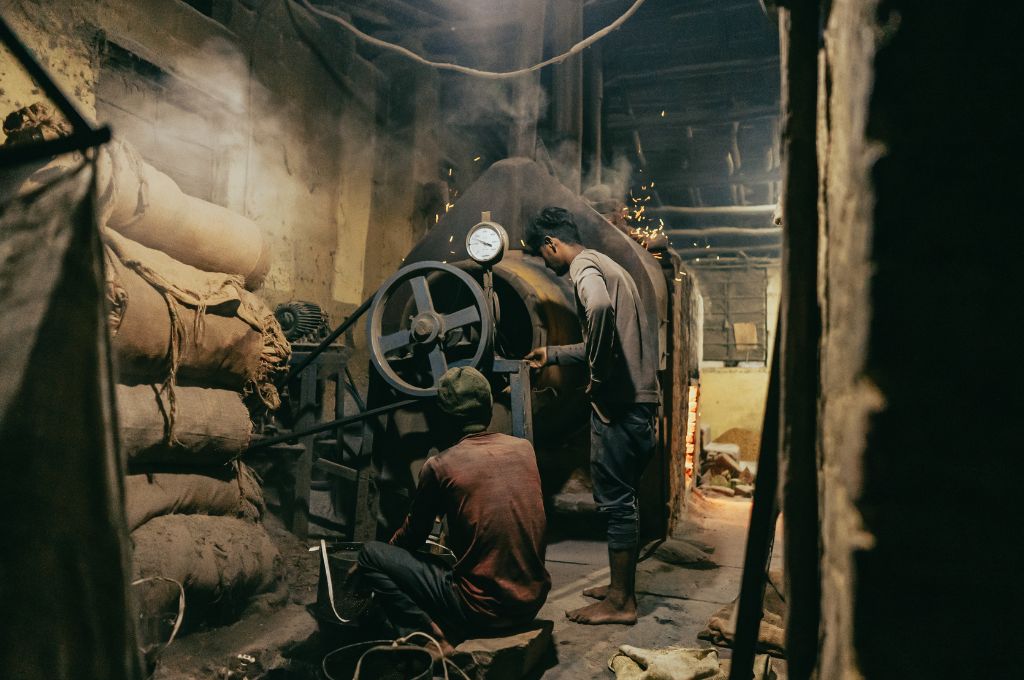
The lowest hanging fruit is layout design. Blacksmiths, for example, typically sit close to the forge, which exposes them to high heat. We decided to create ergonomic workstations by moving their seats away from the forge, adjusting the height of their hammering stations to suit the angle of their work, and improving natural lighting and cross ventilation in their workshops. This helped minimise the strain on their bodies and increase their thermal comfort.
Poor layout can also hinder movement and if the space is hot, workers become more lethargic as the day progresses. To navigate this challenge, we suggested increasing the height of the roof at all workspaces. Roofs and walls are expensive investments; people cap their walls at 6–8 feet and cover them with a tin sheet to save money. A low, tin roof heats up a room quickly, but raising the roof by as little as 2 feet can bring great relief. To further improve cross ventilation and heat extraction, we communicated to workers the benefits of kitchen hoods, chimneys, and exhaust fans, and explained the requisite dimensions and features they should look for in such service products.
2. Introducing more budget-friendly products in the market
The myth is that the poor will not adopt climate-resilient measures; the truth is they cannot adopt them without financing support. With incomes already jeopardised by heat stress, workers’ capacity to reinvest in workspaces and safeguard themselves from rising temperatures diminishes. Poor access to institutional capital further narrows their options. During our study, we found that it was largely small-scale entrepreneurs who could invest in passive adaptation measures. They’d take a personal loan of INR 50,000–70,000 from credit cooperatives or housing finance companies to add a chajja (roof or overhang on a window) or paint a roof. But these investments were typically made at the time of a wedding, or when they had to repair their shop after the monsoon, or when they had access to capital subsidy for workspaces via schemes such as the Pradhan Mantri Formalisation of Micro Food Processing Enterprises Scheme (PMFME), Udyogini, Pradhan Mantri Awas Yojana (PMAY), Watershed Development Fund, and Mukhyamantri Krushi Udyog Yojana (MKUY).
What’s required to scale climate adaption, first and foremost, is market disruption. Affordable climate-adaptive products like cool roofing solutions should be available easily across the country. For this we need more private sector innovation around affordable adaptation measures, because the poor will need these measures most in the coming years, and in volume.
3. Improving financial assistance mechanisms
To develop and scale climate-adaptive interventions through subsidies and low-cost finance, solutions must be customised to suit those for whom they are intended. For instance, people in low-income communities often invest in their homes incrementally. Currently, a good roof costs INR 350–420 per sq ft (using reinforced cement concrete or precast slabs) for a 300 sq ft space—capital that is expensive for many. If lending mechanisms allow them to first start with an INR 100 per sq ft roof and work their way up to an INR 350 per sq ft roof later when their economic circumstances improve, they’ll still have the bare minimum cooling they need without straining their budget.
4. Redesigning existing schemes and policies
At the same time, we need local schemes that will incentivise people to avail of these solutions. The government is actively developing heat action plans and working with community-based organisations to drive mobilisation on the ground. Such organisations are critical for capacity building and community training, enabling access and inclusivity. But the focus thus far has largely been on health and well-being measures. What is lacking are approaches that link to productivity. Additionally, because heat is a slow-building phenomenon, it often isn’t viewed with the same sense of urgency as a natural disaster like a cyclone. As a result, the safety nets, adaptation measures, and subsidies designed for it are either non-existent, partially devised, or poorly implemented.
Therefore, there is a need to broaden our understanding of the consequences of increasing temperatures and redesign government schemes to build resilience to heat. Subsidies, for one, can be tweaked. Consider the PMFME, under the Ministry of Food Processing Industries. It was designed to facilitate 35–50 percent subsidies for capital investments in food industries, which include small businesses that manufacture snacks, colas, and so on. The latest update now says that no more than 25–30 percent (of the subsidy) can be used for building infrastructure; it can only be used for appliances for production. What this means is that people will invest in machines, but in workspaces that are not conducive for work in the first place.
Adaptation measures must prioritise those most vulnerable to these stressors.
Here’s an example of a financing model that has worked. In Meghalaya, where communities are prone to multiple risks such as extreme heat, cold, rainfall, earthquake, and landslides, SELCO—in partnership with local nonprofits like Sauramandala Foundation and the state government’s PRIME programme—has developed 50 percent subsidy products that will help build energy-efficient and thermally efficient workspaces for micro enterprises like eateries and textile, food-, and agro-processing units. The remaining 50 percent will be taken care of by zero-interest loans. It’s a pilot that will cover 300 workspaces in three years.
As temperatures continue to rise and unpredictable weather patterns become the norm, it’s critical to evaluate their impact on all aspects of life—from where we live and the way we live to where we work and the way we work. Adaptation measures must prioritise those most vulnerable to these stressors, and focus not only on immediate well-being but on long-term income security as well. Building climate-adaptive workspaces is one way to do it.
—
Know more
- Watch this YouTube series to learn more about SELCO’s research into heat stress and livelihoods.
- Read these documents for a better understand of India’s Cooling Action Plan.
- Read this article on how heat stress poses a risk for delivery workers in India.



